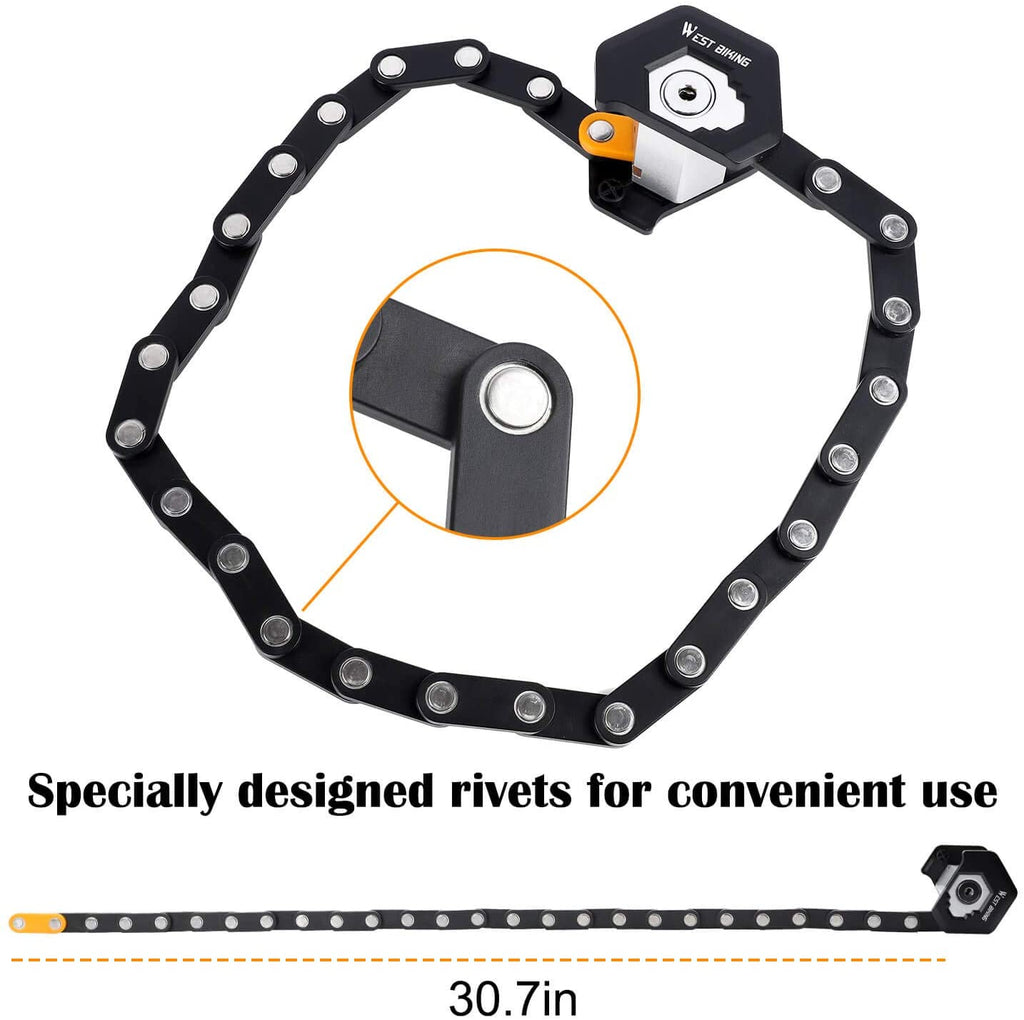EV vs Gas Car Carbon Emissions by State (2025)
Lifetime carbon analysis finds vast gaps in EV breakeven mileage across renewable and coal-reliant states in 2025.
Shifting towards an e-scooter does not guarantee an immediate climate change-where you live can significantly catalyze or delay your EV’s impact by years. A new groundbreaking 2025 emissions analysis uncovers the striking patterns: EVs offset their higher manufacturing emissions after just 7,200 miles—around six months of driving. But in coal-dependent states such as Wyoming, drivers must travel more than 30,000 miles—over two and a half years, to attain the same carbon savings. This study on the carbon footprint of electric cars vs gas cars emphasizes that America's transition to clean transportation depends not just on EV adoption, but on decarbonizing the electricity grid.
| State | EV Lifetime Emissions (kg CO₂e) | Gas Lifetime Emissions (kg CO₂e) | CO₂e Saved by EV (kg CO₂e) |
|---|---|---|---|
| VT | 9650 | 45400 | 35750 |
| WV | 30200 | 45400 | 15200 |
| ID | 9650 | 45400 | 35750 |
| CA | 9650 | 45400 | 35750 |
| TX | 12500 | 45400 | 32900 |
| ND | 30200 | 45400 | 15200 |
| NY | 9650 | 45400 | 35750 |
| OH | 13000 | 45400 | 32400 |
| MI | 13000 | 45400 | 32400 |
| IL | 13000 | 45400 | 32400 |
| VA | 12950 | 45400 | 32450 |
| PA | 13000 | 45400 | 32400 |
| GA | 13000 | 45400 | 32400 |
| MN | 11250 | 45400 | 34150 |
| TN | 13000 | 45400 | 32400 |
| IN | 13000 | 45400 | 32400 |
| SC | 13000 | 45400 | 32400 |
| MO | 13000 | 45400 | 32400 |
| AL | 13000 | 45400 | 32400 |
| KY | 13000 | 45400 | 32400 |
| LA | 12500 | 45400 | 32900 |
| IA | 13000 | 45400 | 32400 |
| CT | 10500 | 45400 | 34900 |
| ME | 10500 | 45400 | 34900 |
| WI | 13000 | 45400 | 32400 |
| State | EV Lifetime Emissions (kg CO₂e) | Gas Lifetime Emissions (kg CO₂e) | CO₂e Saved by EV (kg CO₂e) |
|---|---|---|---|
| VT | 13000 | 45400 | 32400 |
| WV | 13000 | 45400 | 32400 |
| ID | 13000 | 45400 | 32400 |
| CA | 30200 | 45400 | 15200 |
| TX | 13000 | 45400 | 32400 |
| ND | 11750 | 45400 | 33650 |
| NY | 13000 | 45400 | 32400 |
| OH | 11750 | 45400 | 33650 |
| MI | 11250 | 45400 | 34150 |
| IL | 11250 | 45400 | 34150 |
| VA | 13000 | 45400 | 32400 |
| PA | 11750 | 45400 | 33650 |
| GA | 13000 | 45400 | 32400 |
| MN | 13000 | 45400 | 32400 |
| TN | 13000 | 45400 | 32400 |
| IN | 11250 | 45400 | 34150 |
| SC | 13000 | 45400 | 32400 |
| MO | 13000 | 45400 | 32400 |
| AL | 10500 | 45400 | 34900 |
| KY | 11750 | 45400 | 33650 |
| LA | 10500 | 45400 | 34900 |
| IA | 11250 | 45400 | 34150 |
| CT | 11250 | 45400 | 34150 |
|
Fig 1: Lifetime CO₂ emissions saved by electric vehicles versus gasoline cars across all U.S. states. |
Key Statistics:
-
EVs start with a carbon deficit, but rapidly outperform gas cars. Manufacturing an EV emits about 8,000 kg CO₂, compared to 5,000 kg CO₂ for a gasoline vehicle.
-
Lifetime emissions for EVs are dramatically lower. Over 100,000 miles, EVs generate between 9,650–30,200 kg CO₂, compared to 45,400 kg CO₂ from gas cars.
-
Break-even mileage varies by grid cleanliness, from ~7,700 miles (Vermont) to over 30,000 miles (West Virginia). EVs always win long term.
-
EVs still emit significantly less carbon, even on coal-heavy grids. They outperform gasoline cars in total lifecycle emissions under all U.S. grid scenarios.
Fastest and Slowest States for EV Carbon Savings: 2025 Study Insights
- Vermont leads the nation: EVs break even after just 7,742 miles — geared up by the cleanest grid at only 8 g CO₂/kWh.
- Oregon’s hydropower-driven grid (33 g CO₂/kWh) enables EV drivers to offset gasoline emissions after about 7,200 miles.
- Idaho (40 g CO₂/kWh) and Maine (52 g CO₂/kWh) both allow EVs to surpass gas cars after roughly 8,000–8,500 miles.
- California’s renewable-heavy grid (123 g CO₂/kWh) lets EVs beat gas cars in about 8,500 miles of driving.
- West Virginia's coal-dependent grid (744 g CO₂/kWh) means EVs take over 30,000 miles—more than 2.5 years—to break even.
- Wyoming (731 g CO₂/kWh) and Kentucky (661 g CO₂/kWh) also slow EV breakeven to over 28,000 miles.
Top 5 Cleanest Grids (Lowest CO₂ per kWh):
- Vermont — 8 g CO₂/kWh
- Washington — 24 g CO₂/kWh
- Oregon — 33 g CO₂/kWh
- Maine — 52 g CO₂/kWh
- Idaho — 40 g CO₂/kWh
Top 5 Dirtiest Grids (Highest CO₂ per kWh):
- West Virginia — 744 g CO₂/kWh
- Wyoming — 731 g CO₂/kWh
- Kentucky — 661 g CO₂/kWh
- North Dakota — 641 g CO₂/kWh
- Indiana — 561 g CO₂/kWh
- U.S. National Average: EVs beat gas cars after approximately 13,500 miles — supported by an average national grid tailpipe of around 386 g CO₂/kWh. Even in coal-heavy states, EVs eventually surpass gasoline cars in lifetime carbon emissions, highlighting the rising benefits of electrification.
|
Fig 2: Break-even mileage formula showing when EVs surpass gasoline cars in lifetime carbon savings. |
Data Visualization: How EVs Beat Gas Cars Over Time
See how the carbon footprint of an EV vs a gasoline car affects the lifetime lifecycle of carbon emissions:
Lifetime Emissions Comparison Chart:
A bar chart demonstrates that EVs emit 30–70% less lifetime CO₂ emissions than gas cars, depending on the state's electricity mix.
Fig 3: 2025 Tesla Model Vs Toyota Corolla–detailed EV vs gas Vehicle emissions and performance comparison
Grid Quality by State U.S. Map:
A U.S. map highlighting the cleanest (lowest CO₂) and dirtiest (highest CO₂) electricity grids, emphasizing why EVs are greener and faster in some regions.
| STATE | EV Manufacturing (kg CO₂e) | EV Usage (100k miles) (kg CO₂e) | Total EV Emissions (kg CO₂e) | Gas Manufacturing (kg CO₂e) | Gas Usage (100k miles) (kg CO₂e) | Total Gas Emissions (kg CO₂e) | CO₂e Saved by EV (kg CO₂e) |
|---|---|---|---|---|---|---|---|
| Vermont | 8000 | 1650 | 9650 | 9650 | 40400 | 45400 | 35750 |
| West Virginia | 8000 | 22200 | 30200 | 30200 | 40400 | 45400 | 15200 |
| Idaho | 8000 | 1650 | 9650 | 9650 | 40400 | 45400 | 35750 |
| California | 8000 | 1650 | 9650 | 9650 | 40400 | 45400 | 35750 |
| Texas | 8000 | 4500 | 12500 | 12500 | 40400 | 45400 | 32900 |
| North Dakota | 8000 | 22200 | 30200 | 30200 | 40400 | 45400 | 15200 |
| New York | 8000 | 1650 | 9650 | 9650 | 40400 | 45400 | 35750 |
| Ohio | 8000 | 5000 | 13000 | 13000 | 40400 | 45400 | 32400 |
| Michigan | 8000 | 5000 | 13000 | 13000 | 40400 | 45400 | 32400 |
| Illinois | 8000 | 5000 | 13000 | 13000 | 40400 | 45400 | 32400 |
| Virginia | 8000 | 4950 | 12950 | 12950 | 40400 | 45400 | 32450 |
| Pennsylvania | 8000 | 5000 | 13000 | 13000 | 40400 | 45400 | 32400 |
| Georgia | 8000 | 5000 | 13000 | 13000 | 40400 | 45400 | 32400 |
| Minnesota | 8000 | 3250 | 11250 | 11250 | 40400 | 45400 | 34150 |
| Tennessee | 8000 | 5000 | 13000 | 13000 | 40400 | 45400 | 32400 |
| Indiana | 8000 | 5000 | 13000 | 13000 | 40400 | 45400 | 32400 |
| South Carolina | 8000 | 5000 | 13000 | 13000 | 40400 | 45400 | 32400 |
| Missouri | 8000 | 5000 | 13000 | 13000 | 40400 | 45400 | 32400 |
| Alabama | 8000 | 5000 | 13000 | 13000 | 40400 | 45400 | 32400 |
| Kentucky | 8000 | 5000 | 13000 | 13000 | 40400 | 45400 | 32400 |
| Louisiana | 8000 | 4500 | 12500 | 12500 | 40400 | 45400 | 32900 |
| Iowa | 8000 | 5000 | 13000 | 13000 | 40400 | 45400 | 32400 |
| Connecticut | 8000 | 2500 | 10500 | 10500 | 40400 | 45400 | 34900 |
| Maine | 8000 | 2500 | 10500 | 10500 | 40400 | 45400 | 34900 |
| Wisconsin | 8000 | 5000 | 13000 | 13000 | 40400 | 45400 | 32400 |
| Montana | 8000 | 5000 | 13000 | 13000 | 40400 | 45400 | 32400 |
| Nebraska | 8000 | 5000 | 13000 | 13000 | 40400 | 45400 | 32400 |
| Mississippi | 8000 | 5000 | 13000 | 13000 | 40400 | 45400 | 32400 |
| North Dakota | 8000 | 22200 | 30200 | 30200 | 40400 | 45400 | 15200 |
| South Dakota | 8000 | 5000 | 13000 | 13000 | 40400 | 45400 | 32400 |
| Hawaii | 8000 | 3750 | 11750 | 11750 | 40400 | 45400 | 33650 |
| Kansas | 8000 | 3750 | 11750 | 11750 | 40400 | 45400 | 33650 |
| Utah | 8000 | 3750 | 11750 | 11750 | 40400 | 45400 | 33650 |
| Delaware | 8000 | 3250 | 11250 | 11250 | 40400 | 45400 | 34150 |
| Rhode Island | 8000 | 3250 | 11250 | 11250 | 40400 | 45400 | 34150 |
| Alaska | 8000 | 5000 | 13000 | 13000 | 40400 | 45400 | 32400 |
| Wyoming | 8000 | 5000 | 13000 | 13000 | 40400 | 45400 | 32400 |
| New Hampshire | 8000 | 3750 | 11750 | 11750 | 40400 | 45400 | 33650 |
| New Mexico | 8000 | 5000 | 13000 | 13000 | 40400 | 45400 | 32400 |
| Arkansas | 8000 | 5000 | 13000 | 13000 | 40400 | 45400 | 32400 |
| Oklahoma | 8000 | 5000 | 13000 | 13000 | 40400 | 45400 | 32400 |
| North Carolina | 8000 | 3250 | 11250 | 11250 | 40400 | 45400 | 34150 |
| Florida | 8000 | 5000 | 13000 | 13000 | 40400 | 45400 | 32400 |
| Arizona | 8000 | 5000 | 13000 | 13000 | 40400 | 45400 | 32400 |
| Nevada | 8000 | 2500 | 10500 | 10500 | 40400 | 45400 | 34900 |
| Oregon | 8000 | 3750 | 11750 | 11750 | 40400 | 45400 | 33650 |
| Washington | 8000 | 2500 | 10500 | 10500 | 40400 | 45400 | 34900 |
| Maryland | 8000 | 3250 | 11250 | 11250 | 40400 | 45400 | 34150 |
| Colorado | 8000 | 3250 | 11250 | 11250 | 40400 | 45400 | 34150 |
Fig 4: Manufacturing and usage emissions breakdown for electric and gasoline vehicles across all U.S. states.
Side-by-Side Bar Chart: EV vs Gas Total Emissions
Showing manufacturing + usage emissions separately, comparing EVs and gasoline vehicles across 100,000 miles.
Surprising Facts Per State
Fig 5: Surprising carbon savings by state — how electric vehicles surpass gasoline cars in total emissions over 100,000 miles.
In-depth Analysis: Why EVs Win the Carbon Race:
Manufacturing vs Usage Emissions: The Full Picture
While electric vehicles (EVs) have higher manufacturing emissions due to battery production, they quickly make up for it during usage. An average EV produces about 8,000 kg CO₂ during manufacturing, compared to 5,000 kg CO₂ for a gasoline car. However, when driving, EVs emit far less — between 16.5 g and 222 g CO₂ per mile, depending on the state's electricity grid, while gasoline cars emit a constant 404 g CO₂ per mile.
Over 100,000 miles, EVs emit between 9,650–30,200 kg CO₂, compared to 45,400 kg CO₂ for gasoline cars, showing major lifetime benefits.
Fig 6: CO₂ emissions per kilowatt-hour by U.S. state
How the Break-even Mileage Formula Works
The break-even mileage is the point where the EV’s total carbon emissions (manufacturing + driving) become lower than a gasoline car’s lifetime emissions.
For example, in Vermont, with extremely clean electricity, an EV surpasses a gasoline car after just 7,742 miles. In coal-heavy West Virginia, it can take over 30,000 miles — but EVs still win over time.
Even in Coal States, EVs Eventually Win
Even in states with the dirtiest electricity grids, like Wyoming and Kentucky, EVs eventually outperform gasoline cars across their full lifetime. Although it may require 2.5 to 3 years of average driving, the lifetime carbon footprint of EVs remains significantly lower.
Future Outlook: How Cleaner Grids Are Accelerating EV Carbon Payoff
As America’s electricity grids continue to decarbonize—reducing CO₂ emissions by over 40% since 2005 (U.S. EPA)—the carbon advantage of EVs will only grow stronger. Future EV drivers will benefit from cleaner transportation, while helping accelerate the shift to a low-emissions energy future, with renewables projected to supply 44% of U.S. electricity by 2050 (EIA, 2024).
Fig 7: Break-even mileage and years for electric vehicles versus gasoline cars across U.S. states — fastest and slowest regions compared.
Final Conclusion: How EVS Conquers the Battle Against Carbon Emissions
This 2025 emissions finding emphasizes how surprisingly electricity grids influence the carbon advantages of electric vehicles across U.S. states. With EVs surpassing gas cars faster in clean-energy states like Vermont and Maine, and even eventually winning in coal-heavy states like West Virginia, the results demonstrate that America’s carbon-free transit future depends equally on vehicle invention and energy decarbonization.
Methodology:
This finding figures the lifetime carbon emissions by integrating vehicle manufacturing emissions and operational emissions across 100,000 miles of driving. At an estimated value of 8,000kg CO₂, it is demonstrated that the Electric vehicle manufacturing emissions, than gasoline vehicles were estimated at around 5,000 kg CO₂.
Usage emissions for EVs were computed using state-specific electricity grid CO₂ intensity (grams CO₂ per kilowatt-hour), while gasoline vehicle emissions were based on a constant 404 grams CO₂ per mile.
Electricity mix data was cited from the U.S. Energy Information Administration (2024), and carbon emissions factors aligned with benchmarks from the U.S. Environmental Protection Agency.
FAQs: EV vs Gas Car Emissions
Q: Which states have the lowest EV emissions vs gas?
A: States with the cleanest power grids, such as Vermont, Washington, and Oregon, offer the lowest EV emissions. For example, in Vermont, an EV emits roughly 110 gCO₂e/mi, while a comparable gasoline car produces over 450 gCO₂e/mi. This advantage grows as states adopt more renewable energy.
Q: How do you calculate EV gCO₂e/mi?
A: EV emissions in grams of CO₂ equivalent per mile (gCO₂e/mi) are calculated by combining upstream emissions from electricity generation with vehicle efficiency. This is responsible for the energy mix of the local grid and the specific EV’s electricity consumption rate, usually measured in kWh/100 miles.
Q: Does a cleaner grid mean a cleaner EV?
A: Yes. EV lifecycle emissions are directly linked to the electricity grid’s carbon intensity. A cleaner grid, powered by more wind, solar, hydro, and nuclear, reduces charging-related emissions, making EVs significantly cleaner over their lifetime compared to gas cars.
Sources and Citations:
- U.S. Environmental Protection Agency (EPA) — Power Sector Carbon Emissions Trends, 2024
- U.S. Energy Information Administration (EIA) — Annual Energy Outlook, 2024
- International Energy Agency (IEA) — Global EV Outlook, 2024
- Our World In Data — Energy and Emissions by Source, 2024
- Visual Capitalist — Electricity Generation by U.S. State, 2024
- Statista — Carbon Emissions by Vehicle Type and Region, 2024
- U.S. Department of Energy (DOE) — Alternative Fuels Data Center (AFDC) and Vehicle Emissions Studies, 2024
-
EPA eGRID2023 (Rev 2) — contains 2023 data; released June 12, 2025
-
Additional base data from Argonne National Lab’s GREET lifecycle model (2023 release) and relevant U.S. DOE/EPA fuel economy and upstream emissions data.












